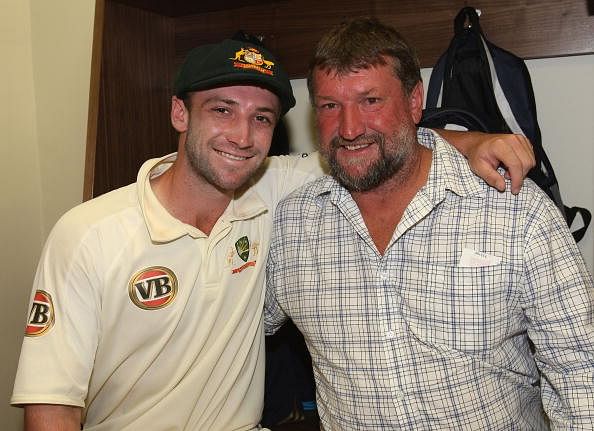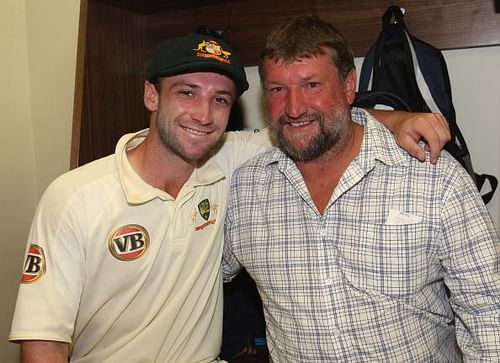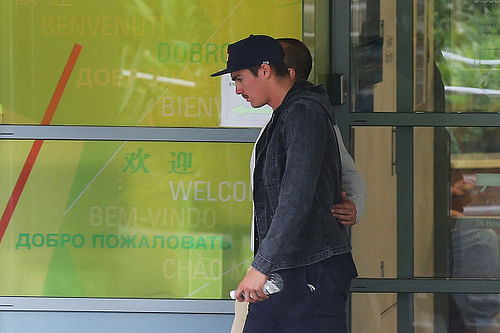
How do you deal with the Sean Abbott situation? A sports psychologist explains

“Sean Abbott, stay strong mate”- One of the Twitter users I follow tweeted this as soon as we heard about Phillip Hughes getting injured and collapsing on the field at the Sydney Cricket Ground (SCG). Unfortunately, we lost Hughsey (fondly called by the cricketing world) after a couple of days of this incident.
Following this, several of my friends asked me how would you as a psychologist deal with this situation, with Sean Abbott. This situation made me actually think about applications of post-traumatic stress disorder (PTSD) in sports. Much has been written about depression and stress in cricket, but very less about PTSD.
Rough games like football and rugby have seen many head injuries followed by death; in the gentlemen’s game, though, it has been a rare occurrence. In football, the blame may not come to one person, except in case of mistimed tackles; in cricket, however, it is referred to as ‘the bowler bowled a bouncer that hit the batman’s head/neck that led to his death’. This is very hard to deal with.
I must say, with Abbott, the whole cricketing fraternity has been backing him, and the journalists have been dealing with the situation very sensitively. In fact, the Australian Cricket board is taking utmost care to make sure Abbott doesn’t suffer from any kind of psychological trauma. This brings us to the topic: the whats, whens, whys and hows of grief counselling applicable in sports.
What and Why?
After a traumatic event such as death, drug scandal, etc., especially in a team sport, the whole team close to the player or the event is bound to go through post-traumatic stress (PTS).
- This event is very unexpected
- The person involved is also very unexpected.
What is grief counselling in sport?
Loss of a teammate is very difficult. Moreover, if the injury that caused the death was due to your ball as a bowler, you will be overridden with the feelings of guilt and fear. Guilt, because you feel it was your fault – and it makes you fear of bowling again. Even though it is a very traumatic and stressful situation, our role as psychologists is to convert the Post Traumatic Stress (PTS) into Post Traumatic Growth (PTG).
When should the player affected start grief counselling ?
Immediately after the event. It would be essential for a player to accept the fact that the event has taken place.
How does the process help the players?
We have two situations here:
- Grief and guilt of the bowler who bowled the ball, which caused the injury and death
- Grief of the teammates
Addressing the bowler’s situation first

The best part about this situation is that none – the media, Cricket Australia or even any members of the cricketing fraternity – have blamed Abbott for the incident in any subtle way, unlike how it was during a situation like, say, Shane Warne during the 2003 World Cup, where the legendary leg-spinner was banned for consuming a banned substance unknowingly. In fact, all of them have shown support for Abbott’s career as a cricketer. This makes it easier for the player to bounce back from such a traumatic event.
The first step would always be to help the player to come in terms with the loss, especially if the player was very close to the victim.
This would be followed by making the player realise his emotions and feeling about the whole situation. As a psychologist, it is pretty sure that the two key emotions that play a part here are guilt and fear.
The first intervention would be to help the player get out of the guilt/self-blame of bowling the ball that killed the batsman.
Once there is comparatively less guilt, we can start working on reducing the fear of bowling again, as well. Self-talk and visualisation are the key intervention strategies that can be used with the player.
Addressing the teammates
Clearly, Hughes’ Australian teammates were totally shocked and moved by the incident. Michael Clarke was a very strong captain and friend to come forward and read out a eulogy earlier today. Sachin Tendulkar, Brendon McCullum and many others from around the globe came forward to express their condolences, which gives away so much about the spirit of world cricket.
The counselling to the teammates would vary upon the level at which each player is affected. Collaboratively, a list can be made to narrow down on the problems, be it emotional or behavioural, faced by the teammates. The steps to the grief counselling are,
1. Coming to terms with the reality of the loss.
2. Working with the emotional pain, anger, guilt and suffering attributed to the loss.
3. A readjustment of life without the significant person.
4. Taking the emotional investment that the client had placed in their significant ‘other’ and rebuilding connections and relationship with others.
5. Building ‘living memories’ that recognise the quality, importance and irreplaceable impact of the person in their loss, and building awareness of the impact and meaning this has for the person now. (CBT Bereavement techniques)
Hughes’ death has got the cricketing world together. But it has also added some light on the importance of transferring the trauma among the teammates and the opponent to a positive growth as a team as Hughes would have loved to see in the game.
![]()